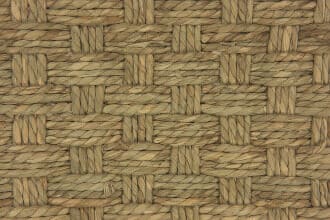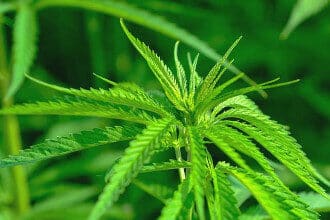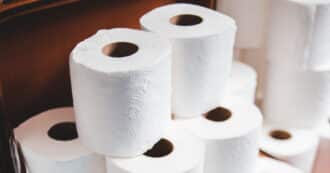By Ilana Stein – Hemp is the perfect example of something that was looked down on for the past 100 years, before being recognized as a material that is not only extremely useful but is also the environmentally-friendly choice for building materials – not least of which is hemp insulation.
What is Hemp?
Hemp – or to give its scientific name, Cannabis sativa – is an aromatic annual herb that belongs to the same family as the cannabis plant, which is famously the source of marijuana and hashish.
To differentiate it from the drugs, this hemp plant is also known as industrial hemp, and as such, it is an incredibly useful plant.
Hemp Fiber
Originating in central Asia, hemp has been in use for thousands of years. Hemp fibers are longer and stronger than wood fibers so that they can be used to produce anything from rope to string, from sacking to canvas. Its plant fibers can even be made into linen and shoes! From an environmental point of view, its fibers have become important in making bioplastics – in other words, plastics that are recyclable and biodegradable, to say nothing of being a good alternative to wood pulp and thus useful in paper making.
Hemp is also edible – it was first used mainly for birdfeed. Today, humans eat it too as the seeds are good sources of protein, fiber and magnesium, and are sprinkled into salads or smoothies.
Hemp fibers are used in a manufacturing process that results in a composite material – that is, a material created from hemp fiber and another material such as lime binder. The result is something called “hempcrete” and is used as an alternative to concrete.
When pressed together with a soy-based glue, hemp wood is created, which can be used for wall assemblies. In fact, it has recently, since 2020, become the eco-friendly replacement of bamboo floors.
Most recently, it has become pivotal in the building material industry as a sustainable way to create hemp insulation.
What is Insulation?
Insulation is defined as a “material that is used to stop heat, sound, or electricity from escaping or entering.” There are a variety of materials that can do this, for example mineral wool, expanded polystyrene and fiberglass batts.
Part of understanding how to insulate areas is understanding thermal resistance. This is a measurement of the heat flow between two points – the lower the resistance, the easier it is for heat to move from one place to another. This heat transfer is also known as thermal energy transfer.
The way a material’s resistance to heat or thermal resistance is measured is known as the R value. The higher the R value, the better the insulation; hemp’s R value measures well compared to other building materials.
What is Hemp Insulation?
The hemp fiber is very long – usually almost six feet long (1.8 meters) – and very tough. When these natural fibers, also known as hemp wool, are combined with non-toxic bonding agents or with kenaf fibers, a composite material is created.
This natural insulating material is non-toxic, strong and breathable, and as such is considered healthy for insulating homes – as well as healthy for the environment since the insulation provided helps reduce the amount of heating or cooling needed.
Hemp wool is extremely strong and thus is used to make hemp batts – which are firm slabs of hemp that can be fitted easily into floors, roofs or walls.
Comparing Hemp Insulation With Fiberglass Insulation
Fiberglass material is extremely versatile, and can be used as stiff boards, rolled fiberglass, fiberglass batts, or loose fill insulation. It is inexpensive, insect-friendly and a sustainable product as it is produced from recycled glass. However, it can be toxic, as it has chemical binders that contain formaldehyde and there have been studies that “have shown that inhaled slivers of fiberglass can cause lung disease.”
Hemp is not toxic. In addition, hemp insulation has a similar thermal performance to fiberglass insulation, and products of hemp good for insulation include rigid foam boards, batt insulation materials and floor insulation applications. Hemp insulation also has a similar R value to fiberglass insulation.
Spray Foam Insulation
A new insulation product is spray foam insulation. While fiberglass insulation allows air into and out of the building, spray foam stops air coming in or escaping.
Like hemp insulation, spray foam insulation comes in different forms, from rigid foam board to open cell spray foam. When compared to traditional insulation, spray foam can “expand up to 100 times in size on contact with the area of application.” By expanding like this, spray foam can fill wall cavities well and easily.
Hemp Insulation Wins
Many people recommend hemp insulation as being better than traditional insulation: “Hemp is a medium density insulation material with low conductivity and a high thermal mass. These factors enable it to retain heat, whilst efficiently regulating the building’s thermal performance.”
Hemp insulation, or batt insulation, has excellent acoustic absorption properties, absorbing noise well. It is also good for heat absorption, and thus used in external wall insulation for exterior walls as well as an inner fibrous layer. It absorbs moisture as well, preventing mold build up.
US Confusion Over Hemp
So why doesn’t everyone install hemp insulation?
Hemp has been grown and used for at least 6,000 years, but became illegal across North America in the 1930s. Because hemp used as a building material was classified as the same plant as that of medical cannabis, the authorities were convinced that industrial hemp had the same psychoactive properties as marijuana. However, industrial hemp is known to be “cultivated to lower the level of the narcotic tetrahydrocannabinol, or THC, the chemical that gives marijuana its ‘high’.”
Although the ban was reversed in the US in 2018, North America is far behind the UK and other countries, where hemp is considered the new green crop and has become a popular building material, with applications for all parts of buildings and other building processes. But its popularity, finally understood, has soared: “Between 2014 and 2019, hemp as a crop increased from zero to nearly 150,000 acres across the United States.”
Green Buildings and Building Materials
Hemp is considered one of the most environmentally-friendly building materials today: “Houses built with hemp use less energy, create less waste, and cost less money to heat or cool.”
The environmental impact of hemp goes even further: “as a crop, hemp requires no pesticides or insecticides and consumes very little water. It can also sequester 5 times more CO² than wood during the same growing period. In addition, it can bring value to idle land since it is grown as part of a normal crop rotation.”
Hemp insulation, moreover, is created from natural fibers, it is a rapidly renewable material and at the end of its usefulness, it can be composted and recycled. Its R value is good – meaning it transfers heat efficiently, so that the temperature in the room or home is comfortable all the time. It is non-toxic and is safe to handle without gloves.
Finally, as it grows, this plant reduces the amount of greenhouse gases that enter our atmosphere.
The Cost of Hemp Insulation
Hemp insulation costs depend on hemp production and the size of the hemp batts; the batt is charged per square foot. As consumer demand increases, the price of hemp insulation has begun to drop. However, at present, it is still much more expensive than traditional insulation.
Hemp and Religion
Hemp has deep roots in civilization and religion.
In particular, hemp has a long history of use in Japanese culture and the Shinto religion. This is no surprise, because hemp is such a strong and useful material, as discussed above. Hemp was used “to purify, to drive out evil (exorcism). Hemp seeds were used in Shinto marriage ceremonies. In some ceremonies hemp leaves were burnt as an ‘invitation to the spirits’.”
In addition, “the priests’ clothes were made from hemp linen and and bell ropes in shrines were made from hemp too. Hemp for bell ropes is still grown in Nagano prefecture today. Several hemp fields are cultivated on Shikoku (one of the four main islands of Japan) to make ceremonial linen clothes for the Imperial family and for Shinto priests.”
Using Hemp Today
As hemp insulation becomes more accessible, there are concerns regarding soil health and water health and scientists advocate that: “As hemp use expands, there will be a critical need to better understand the environmental benefits (and risks) to water quality and quantity in our nation’s stream, rivers, and groundwater systems.”
Are you building or remodeling your religious building? Talk to your community about using hemp for the building materials.
This is a great way to break the hemp stigma and simultaneously build a strong and sustainable home for your religious community.
* Featured image source





